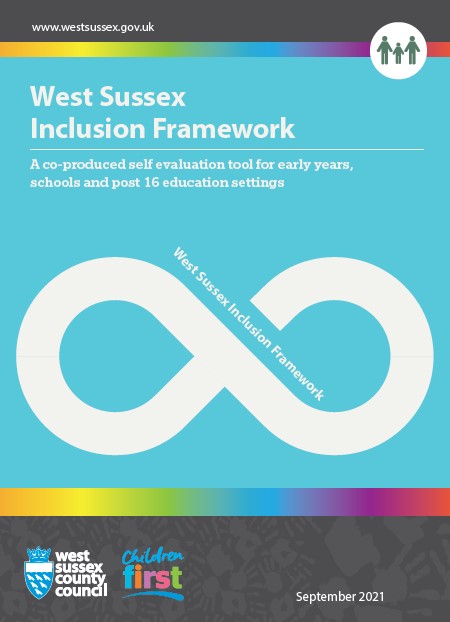
West Sussex Inclusion Framework September 2021 doc
For transitions that take place within the school.
Is there evidence that….?
- Children and young people (CYP) are supported to manage transitions that take place within the school.
Discussion prompts / evidence of impact
- Key staff members are identified to lead on transitions that happen within the school day. This includes small transitions that take place during every school day and those between the home and school environment. They include changes between activities, lessons, differences in environment and/or sensory input, and to and from break.
- Staff recognise that these factors have an impact on social, emotional and mental health development and may affect CYP during any transition period e.g. lesson to lesson, teacher to teacher, school to home. Staff work proactively and sensitively with children and their families to address needs in relation to this and promote resilience.
- Effective support is provided for CYP who find transition between home and school or at particular times of day difficult. These are regularly reviewed with CYP and their parents.
For transitions that take place between schools…
Is there evidence that…
- CYP are supported to manage transitions between schools and settings. This includes individual transitions that may take place during the school year.
Discussion prompts / evidence of impact
- Key staff members are identified to lead on successful transitions between schools.
- There are clear policies and procedures in place to support CYP in their transition. These are regularly reviewed with CYP and parents who are due to / have recently transitioned.
- The school has knowledge of feeder and transitioning schools for the previous and next key stages and knows the link staff, e.g. safeguarding lead, special educational needs co-ordinator (SENCO).
- Appropriate paperwork is securely shared with feeder and transitioning schools prior to transition with a confirmation response expectation, to enable schools to report back that they have received all paperwork. The school supports parents with any paperwork or transition documents if required and in line with statutory guidance. These transitions may occur at any time during the school year.
- All CYP are supported through transition. Those who may struggle a little more are pro-actively identified and a bespoke transition package, with additional visits and activities, is planned according to their needs.
- Transition arrangements are planned for and tailored to CYP to ensure their individual needs are met and reasonable adjustments are in place prior to starting. For example, use of home visits, social stories, additional environment visits and one-page profiles, virtual tours and Meet the Staff film clips.
- Where graduated transitions are used, there is evidence of a clear and timely pathway/progression to full time attendance.
- The views of these CYP, parents and relevant professionals are sought, considered and acted upon when planning for transition. For example, what information is appropriate to share as part of the transition process. Particular efforts are made to engage with students and parent carers from disadvantaged groups – including those from Gypsy, Roma or Traveller backgrounds.
- Data and information gathered during the transition process is used to inform strategic planning for increased inclusion and accessibility.
- To ensure consistency of experience for CYP, all new staff have an induction programme and named member of staff (Team around the Worker) to support them with their transition into the school.
Last updated 16 August 2021
 Tools for Schools
Tools for Schools